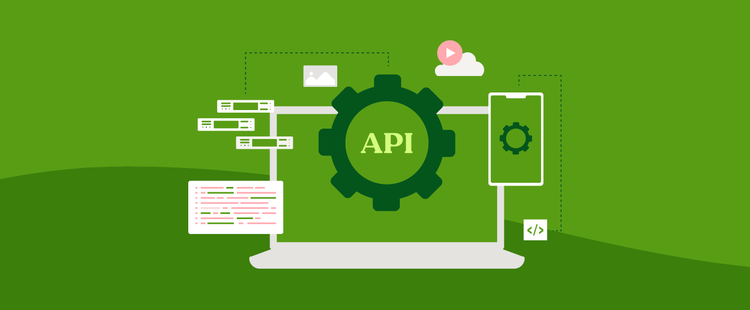What Is an Open API—and Why Does It Matter for HR Software?

Curating culture, hiring and retaining top talent, developing employees, making sure people get paid on time—it’s all in a day’s work for an HR pro. It’s a lot and often requires using different types of HR technology. Having the right software to support your processes is essential for crossing everything off that massive to-do list.
Your HR technology not only needs to be the right technology, but it all needs to work together to provide you with the best, most efficient experience. With an open API (application programming interface), you have a powerful tool in your arsenal to connect disparate systems and centralize your data.
Consider this: You have a human resources information system (HRIS), an applicant tracking system (ATS), performance management software, payroll software, and more. If those systems aren’t integrated, you’ve got a massive amount of tedious data entry on your hands. Plus, the potential for security breaches increases substantially when you migrate between systems.
By using an open API, you can get strategic about centralizing data, connecting systems, and making your team’s jobs easier.
What Is an Open API?
An API is an application programming interface. This piece of technology essentially works as a communication tool between disparate systems. Imagine you’re a customer at a restaurant. Your waiter takes your order and communicates it to the kitchen staff, who then makes the food and hands it back to the waiter, who delivers it to you. In this scenario, the waiter is an API — they deliver information back and forth between the customer and the kitchen. Or in technology terms, they’re delivering information back and forth between systems.
Not all software fully opens its doors for data sharing, though. An API is considered open when the system allows other systems to connect without having to go through the organization’s internal IT team.
What’s the Difference Between an Open API and a Closed API?
Simply put, an open API is accessible—a closed API is not. Many technology companies open their API when their software regularly works with other systems. An HRIS is a great example because it’s often used with separate payroll, ATS, or performance management systems.
When a system has a closed API, developers must work directly with that organization’s team and often multi-layered processes to integrate their systems.
Why Are Open APIs Important for HR Pros?
Open APIs allow HR pros to create efficient processes for the entire team. The many benefits include:
Less Data Entry
Integrating systems allows you to enter employee information once. If you enter (or update) an employee’s info in your HRIS, that information will automatically flow to integrated systems that also use the same employee data. For example, connecting your benefits administration tool to your payroll software means your payroll software knows exactly how much to deduct from each employee’s paycheck for their respective benefits plans. Less data entry equals less time spent on tedious tasks and more time spent on what really matters.
Better Security
Integrating systems using an open API means fewer individual logins and passwords across your entire organization. Aside from being easier, it’s also more secure. It leaves less room for passwords to be compromised, and it relies on automated systems, not humans, to pass data back and forth.
All-In-One
When all your systems are connected, you truly have a custom-built all-in-one platform. Sure, you’re using different pieces of software, but you essentially create a system where you can work from one centralized source.
Employee Adoption
Employees are far more likely to adopt new technology when it’s easy to access and update; integrated systems make that possible. Your employees know that if they change their address in your HRIS, that update will be reflected in other relevant systems, creating a low barrier to entry when it comes to keeping things up-to-date and accurate.
Powerful HR tools are only a click away.
Check out the BambooHR Marketplace to discover 120+ powerful integrations for your entire HR tech stack—including tools you already use and love.
When Should HR Pros Explore the Possibility of an Open API?
When searching for new HR technology, consider including an open API on your list of must-haves. It opens the door for flexibility in choice and ease of use. These reasons top the list of why you might want to prioritize open APIs when searching for HR software:
You Want to Integrate a Software You’re Already Using with Your HRIS
You may be using an ATS that your team knows and loves. Choosing an HRIS with an open API ensures you can keep using that ATS seamlessly.
Existing BambooHR Marketplace Solutions Don’t Fit Your Needs
If you’re searching for a new HR solution, we recommend checking out the BambooHR Marketplace first. It’s chock-full of HR apps that have been vetted by us and have pre-built integrations, making them easy to implement and integrate.
However, you may have a particular need that Marketplace solutions don’t fit. In that case, opting for a solution with an open API ensures you get the same benefits of an integrated Marketplace solution but with the exact software to fit your needs.
You Want Options!
Opting for HR technology that offers an open API leaves you open to more possibilities. After all, integrating systems may not be a must right now, but it may quickly jump to the top of that list later on. Choosing a software solution that doesn’t offer an open API could set you up for failure in the future if you decide you want to integrate.